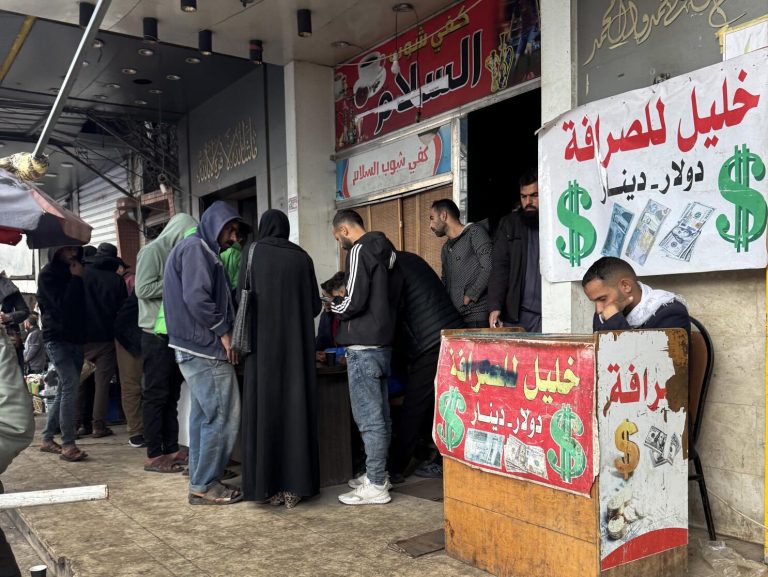Dozens of Palestinians gathered outside the Bank of Palestine in Deir al-Balah, hoping to withdraw money for their families after weeks of financial paralysis. However, as the bank’s doors reopened, many left empty-handed, a stark reminder of the worsening Gaza bank crisis that has gripped the enclave since the war between Hamas and Israel began two years ago.
Despite efforts to restore limited banking operations, the territory continues to suffer from a severe cash liquidity shortage. Lines stretched for hours, with residents expressing frustration as teller machines quickly ran dry. “Without having the bank open and without money, it does not matter that the prices in the market have dropped,” said Kamilia al-Ajez, a displaced resident from Rafah.
Economy Struggles Under War and Isolation
The Gaza bank crisis underscores the broader economic collapse unfolding in the region. Trade restrictions, infrastructure damage, and limited humanitarian access have paralyzed financial systems, leaving citizens unable to access salaries, savings, or remittances. Even as banks cautiously resume services, the lack of available cash continues to strangle daily life and commerce.
Families depend on scarce aid deliveries and local barter to survive, while small businesses struggle to restock essentials. The reopening of select banks, once viewed as a glimmer of hope, has instead exposed how deeply the war has eroded the economic foundation of Gaza.
Mounting Frustration and Uncertain Recovery
As residents line up outside branches, uncertainty clouds their financial future. Bank officials cite logistical hurdles and limited currency inflows as key obstacles to full operations. International observers warn that unless liquidity improves, the Gaza bank crisis could lead to complete financial stagnation in the enclave.
For many Palestinians, the reopening of banks has offered little relief—only another reminder of a system stretched to its limits by conflict and isolation.

